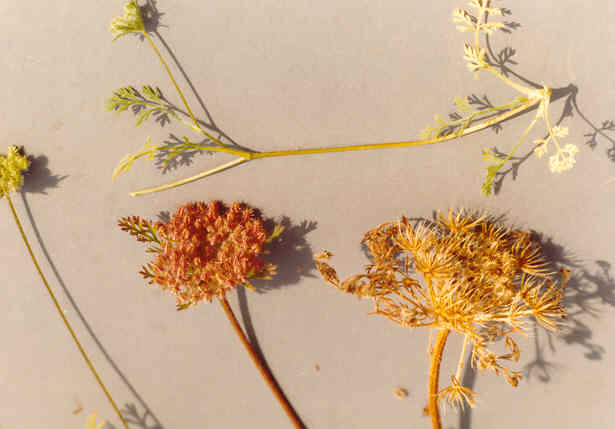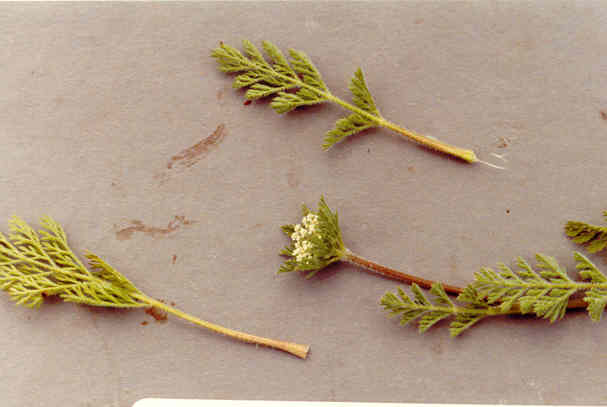
Daucus pusillus Michx.
Apiaceae (Carrot Family)
South East U.S., South America
 |
Daucus pusillus Michx.Apiaceae (Carrot Family)South East U.S., South America
Rattlesnake Weed |
June Photo
Plant Characteristics:
Annual, 3-8 dm. high, from long slender more or less fibrous branching roots,
simple or few-branched, retrorsely papillate-hispid; lf. blades 3-10 cm. long,
pinnately-decompound into small narrow ultimate divisions; peduncles 1-4 dm.
long; rays unequal; invol. of leafy pinnately divided bracts; infl. compact in
fr.; fls. white; fr. oblong, 3-5 mm. long, the commissure with 2 rows of stiff
bristles.
Habitat:
Common on dry slopes, especially after fire and disturbance, below 5000
ft.; Coastal Sage Scrub, Chaparral, S. Oak Wd., etc.; cismontane and occasional
on desert; to B.C., Atlantic Coast, n. Mex., Channel Ids.
April-June.
Name:
Greek, daukos, name of an
umbelliferous plant of the carrot kind. (Jaeger 76).
Latin, pusillus, very small,
tiny. (Simpson 489).
General:
Occasional in the study area. Photographs
are from Santa Ana Heights and the Castaway's Bluffs. (my comments).
Apiaceae is a large family of herbs with hollow stems and alternate
leaves, most often compound and usually swollen at the base.
The small flowers appear in compound umbels.
The family includes useful garden vegetables such as parsley, carrots and
celery as well as dill, anise and others found in spice cabinets.
(Dale 45). Nutritionists
are well aware that the carotin principle found in carrots was used during the
war to help aviators overcome night blindness.
Thus one can consider the vegetable a useful medicine.
(Coon 239). D. carota
var. sativa is the cultivated carrot. (Bailey
752). Delfina
Cuero, a Kumeyaay or Southern Diegueno Indian, made the following comments about
Daucus pusillus
in her autobiography: "Boil
whole plant and use as medicine for a toothache; also for fevers, drink as a
tea." (Shipek 89). D.
carota, the wild carrot is an immigrant from Europe which is used as a
stimulant, diuretic and carminative. (Meyer 28).
About 25 species, widely distributed.
(Munz, Flora So. Calif. 75).
Text Ref:
Abrams, Vol. III 228; Hickman, Ed. 146; Munz, Calif.
Flora 1009; Munz, Flora So. Calif.
75; Roberts 7.
Photo Ref:
June 3 83 # 11; Mar 5-April 1 85 # 16A.
Identity: by R. De Ruff,
confirmed by John Johnson.
Computer Ref: Plant Data 139.
Have plant specimen.
Last edit 10/22/02.
 |